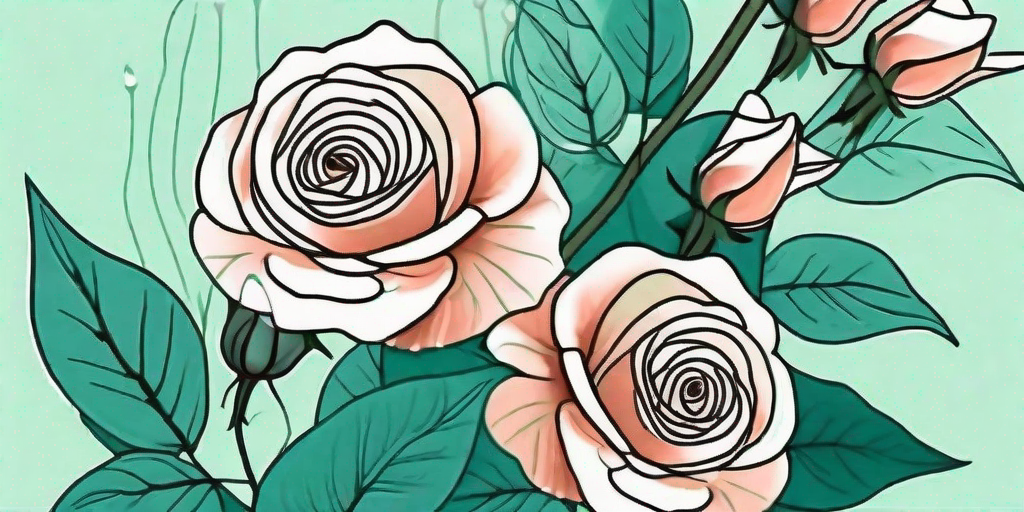
Ah, roses. They're the symbol of love, the epitome of beauty, and the pride of gardeners worldwide. But, as any rose enthusiast knows, these delicate flowers are also a magnet for pests, particularly thrips. These tiny, winged insects are the bane of rose growers everywhere, causing damage to both the leaves and the blossoms of this beloved plant. But fear not, dear reader, for in this guide, we'll show you how to banish these pesky pests and keep your roses looking their best.
Understanding Thrips: Know Your Enemy
Before we dive into the nitty-gritty of thrip control, it's important to understand what we're dealing with. Thrips are tiny insects, often less than a millimeter in length, that feed on the sap of plants. They're particularly fond of roses, where they can cause significant damage to both the leaves and the blossoms.
Thrips are not just a one-trick pony, either. These little critters are known to spread plant viruses, further compounding the damage they cause. So, it's safe to say that when it comes to roses, thrips are about as welcome as a skunk at a garden party.
Identifying Thrips
Given their small size, thrips can be difficult to spot with the naked eye. However, there are a few telltale signs that your roses may be hosting these unwanted guests. Look for discolored or distorted leaves, as well as blossoms that fail to open properly. If you see these signs, chances are you've got a thrip problem on your hands.
For a more definitive diagnosis, try shaking a few leaves or blossoms over a white piece of paper. If thrips are present, you should see tiny, dark specks fall onto the paper. Congratulations, you've just met your enemy.
Preventing Thrips: An Ounce of Prevention...
As the old saying goes, an ounce of prevention is worth a pound of cure. This is especially true when it comes to thrips. By taking a few simple steps, you can make your garden less inviting to these pests and reduce the likelihood of an infestation.
First and foremost, keep your garden clean. Remove any dead or diseased plant material, as this can attract thrips and other pests. Similarly, avoid over-fertilizing your roses, as this can lead to lush, soft growth that is particularly appealing to thrips.
Using Companion Plants
Another effective prevention strategy is the use of companion plants. These are plants that deter pests, either by producing chemicals that the pests find unattractive, or by attracting beneficial insects that prey on the pests. For thrips, good companion plants include marigolds, nasturtiums, and garlic.
So, if you're looking to add a bit of color to your rose garden, why not plant a few marigolds or nasturtiums? Not only will they brighten up your garden, but they'll also help keep those pesky thrips at bay.
Controlling Thrips: Bring Out the Big Guns
If prevention measures fail and you find yourself facing a thrip infestation, don't despair. There are several effective control methods available, ranging from organic solutions to chemical pesticides.
One of the most effective organic solutions is the use of beneficial insects. These are insects that prey on thrips, helping to keep their numbers in check. Good choices include ladybugs, lacewings, and predatory mites. These beneficial insects can often be purchased online or at your local garden center.
Using Pesticides
If organic methods aren't cutting it, you may need to resort to chemical pesticides. There are several on the market that are effective against thrips, including spinosad, imidacloprid, and acephate. However, these should be used as a last resort, as they can also harm beneficial insects and other non-target species.
When using pesticides, always follow the manufacturer's instructions carefully. Apply the pesticide in the early morning or late evening, when thrips are most active, and be sure to cover all parts of the plant, including the undersides of leaves.
FAQs
What are thrips?
Thrips are tiny, winged insects that feed on the sap of plants, including roses. They can cause significant damage to leaves and blossoms, and are also known to spread plant viruses.
How can I prevent thrips?
Prevention measures include keeping your garden clean, avoiding over-fertilization, and using companion plants such as marigolds, nasturtiums, and garlic.
How can I control thrips?
Control methods include the use of beneficial insects, such as ladybugs, lacewings, and predatory mites, as well as chemical pesticides. However, pesticides should be used as a last resort, as they can also harm non-target species.
Conclusion
While thrips can be a nuisance, they don't have to spell disaster for your rose garden. By understanding these pests and taking proactive measures to prevent and control them, you can keep your roses looking their best. So, say goodbye to thrips and hello to beautiful roses. Your garden (and your neighbors) will thank you.















